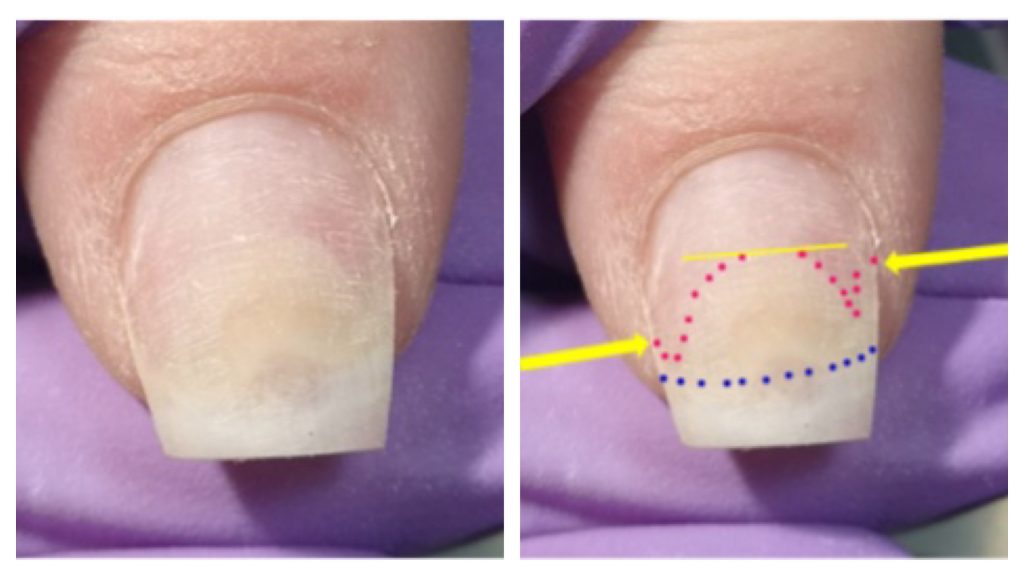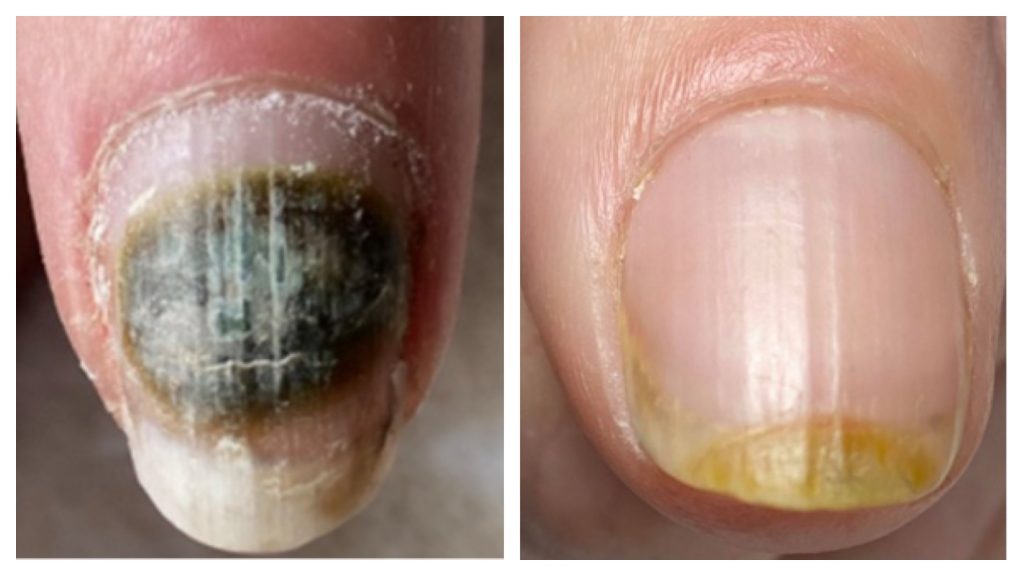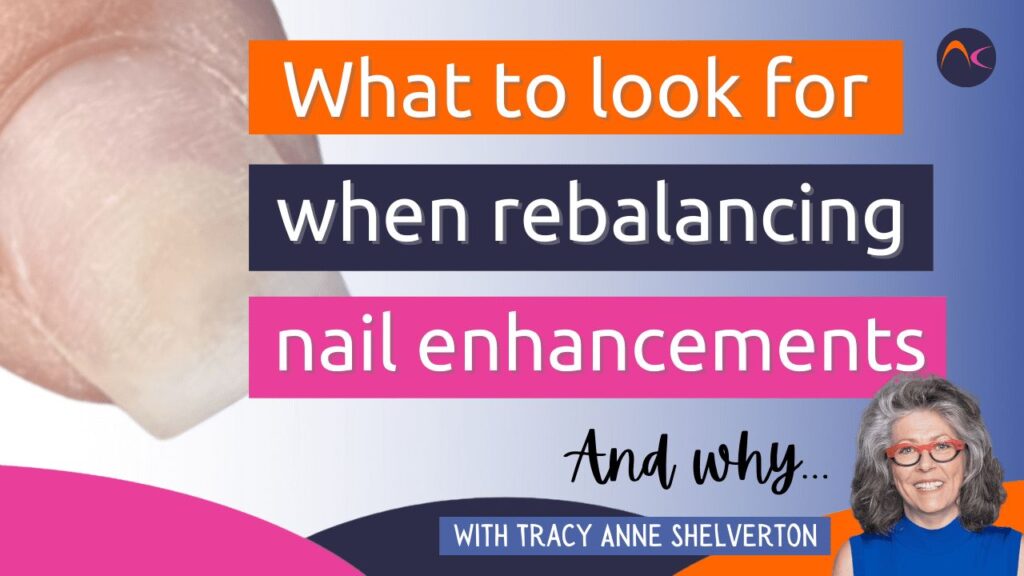After soaking off our gel polish or rebalancing our enhancements it’s important to inspect our clients nail plates for any signs of abnormalities.
We don’t want to see …
- Yellowing of the nail plate
This could be onycholysis or inner nail plate damage
- Greenish effects on or under the nail plate
This could be the start of a bacterial infection
- Chalky white surface areas on the nail plate
This could be white superficial onychomycosis
All three give us a contra indication for continuing to service the client and all 3 need to be taken care of in a completely different way. (Look in our Nail Conditions section)
But how many of us look behind the natural nail at the free edge? Be honest with yourself here – I know my nail tech does but we were trained in the same place so that’s logical.
I want to show you something: Onycholysis

This is what one of my colleges saw when she removed her artificial nail product – I forgive her the missing lateral side walls at the time she didn’t realise they were one of the 4 guardian seals of the nail unit.
The yellow line shows where the nail plate is attached to the nail bed like it should be.
The yellow arrows show where the onycholysis ends but also the amount of detached nail plate in the lateral nail fold.
The pink dots the proximal end of the onycholysis.
The blue dots where the onychodermal band and the hyponychium should be.
Have a look at this picture of the nail unit from under the free edge. The yellow arrows and line show the detachment of the hyponychium and onychodermal band.
Now imagine if this college was just doing an infill maybe from a dark blue or black hard gel or builder gel polish – no way she would see just how bad the onycholysis is unless she looked behind the free edge. The onycholysis consumes almost 2/3rd of the nail! That’s enough space for a family of bacteria and other mean pathogens to have a vacation in for 6 months!

What happens when we miss that?
This happens! Pseudomonas Aeruginosa bacterial infection.

This is where you do not want to be, this client of a salon here in the Netherlands has been working for 6 months following protocol to reduce this bacterial infection, removing the nail plate was not an option and we would not do that unless a doctor or medical specialist nurse asked us to and then only under controlled conditions.
Lastly – White Superficial Onychomycosis

White Superficial Onychomycosis is a surface fungal infection that can affect not only the nails but also the skin – Here in the Netherlands we have a protocol to deal with this infection – please note to never file it of the nail plate as it can spread easily, become airborne and possibly enter your lungs.
But – if we spot these problems sooner – if we look behind the free edge during rebalancing, if we pay attention during removal we can see and deal with problems before they turn into nightmares.
Sometimes ‘stuff’ just happens, it’s not always something you did or didn’t do, maybe the artificial nail product just cracked and water seeped in and Pseudomonas Aeruginosa (it’s not called an opportunistic pathogen for nothing) had a field day and took hold, maybe the product cracked and she is vulnerable to WSO and it took hold (that’s really possible) and maybe your client has suddenly showed signs of an allergic reaction to your product (keeping away from the skin will help here) but when you don’t know what to look for and you are worried for your client its almost understandable that you just try to cover it up, but please don’t.
Get educated and fix the problem, accidents happen, that’s not the problem, the problem is ignoring them or not having the right information to snap them in the bud.
Don’t only get educated but keep renewing your education, times change, knowledge is expanded all of the time, medical science moves at amazing speed – it’s up to us to keep up!


